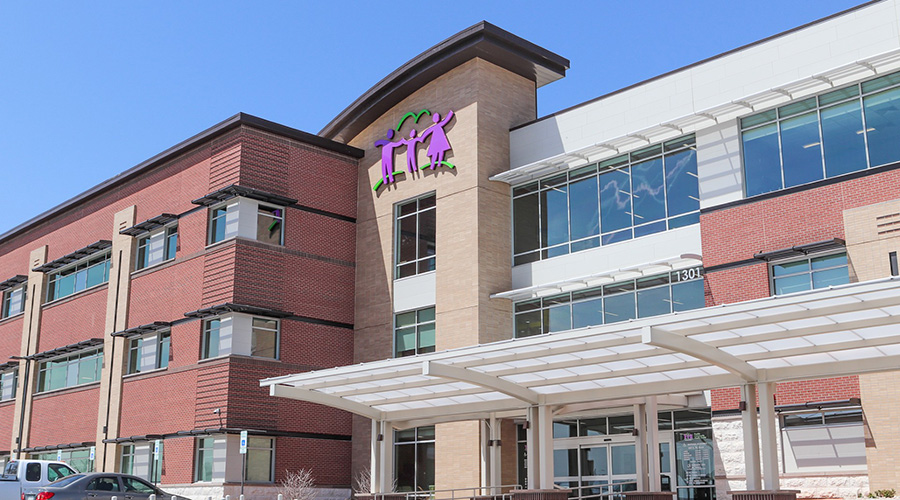Mitigating Future Cost Risk: The Real Reason For Long-Term Energy Planning
Second of a four-part Green Building Report on long-term energy planning.
Long-term planning should be designed to mitigate future cost risk. Because a building’s energy investment is such a significant percentage of it operating costs, from 40 percent to even 50 percent of annual cost depending upon what’s included, looking beyond the visible horizon provides fresh insight into the potential risks that can impact the energy expense category. Energy planning offers the opportunity to design solutions to such risks.
Near-term and long-term needs often compete. Consequently, energy planning is always a work-in-progress, tweaked as projected conditions grow more sharply into focus, narrowing the set of variables that impact decision-making and strengthening the long-term plan. For example, upgrading building automation controls often presents itself as a long-term need in conflict with near-term investments. Unless a control system crashes and presents a building owner with no other choice, investments in building aesthetics typically trump investments in controls, which, although dated and performing less than optimally, continue to serve their intended purpose. Yet, by thoroughly investigating all options associated with upgrading controls and then developing a detailed upgrade plan, including timeframe for implementation, what might otherwise have no place in an operating budget finds a home in an energy plan designed to meet the building owner’s objectives over a multi-year planning cycle.
Veteran facility managers recognize that an organization’s buildings rarely receive the attention directed at its primary activity – sales, manufacturing, research, etc. But because buildings account for 39 percent of carbon dioxide emissions, as reported by the U.S. Green Building Council and others, they become a progressively more important component of organizations’ sustainability credentials as reported to a growing list of rating agencies, lenders, and insurers. Melding energy planning with long-term planning is coming to be expected by organizations that recognize that they will increasingly be judged by metrics that include the tons of carbon dioxide they emit into the atmosphere. And although tracking such emissions may not be a key performance indicator today, the intersection of energy planning and long-term planning provides a platform for presenting a range of possibilities that incorporates regulatory and other public policy “what ifs” to stimulate discussion of how energy will be consumed in the future.
No less important than defining an organization’s energy investment is bringing together the team best qualified to address all energy plan elements. Planning won’t be successful if undertaken in a vacuum. Asset management, building management and engineering staff, mechanical and controls contractors familiar with building systems, energy supply representatives, demand response service providers, the marketing and leasing team if a multi-tenant leased property, and other appropriate consultants can all be brought into the process to share what they know, brainstorm the “what-ifs” relevant to the energy space, and offer alternatives to be threaded into a long-term asset plan.
Almost all such planning begins with an assessment of HVAC system condition – supply, distribution, and control – and its ability to maintain occupant comfort conditions five years out and longer. At the same time, it’s appropriate to assess opportunities to optimize HVAC performance immediately through operational improvements to help improve efficiency and raise benchmark ratings in the near-term.
Trust, But Audit
Energy audits remain the industry standard for assessing HVAC equipment condition and identifying energy reduction opportunities. ASHRAE has gone so far as to institutionalize them in its Level I, II and III designs, and they remain part of the LEED for Operations and Maintenance prerequisite and credit regime. It therefore should be with great confidence that a property or facility manager require an energy audit to be performed regularly – every three years is an excellent rule of thumb – as a foundation for understanding existing HVAC system performance and opportunities for functional improvement and enhanced efficiency. Regardless of all other efforts to meld energy planning with an asset’s long-term planning needs, the practice of performing regularly recurring energy audits generates, at minimum, a periodic report that confirms then-existing conditions and offers recommendations for improved performance. Past and current energy audits can be compared to determine progress toward improving equipment performance, reliability, and efficiency.
Whether viewed as part of long-term planning or not, engineering staff should regularly provide management personnel with a deferred maintenance report of all equipment in their charge. The engineering staff’s deferred maintenance report, end-of-useful-life metrics, functional obsolescence, inability of systems to effectively communicate with one another, service contractors no longer supporting equipment or systems, all reinforced by chronic and recurring comfort issues can serve to inform energy planning and reinforce its role as part of long-term planning for the asset and the organization.
Undertaking an energy audit can stimulate the engineering team’s multi-year training plan. As opportunities for adding new technologies to the existing plant are identified, it may be the perfect time to also identify technical training programs that help assure that site engineering personnel are well prepared for implementing new technologies as well as updating their capabilities with existing equipment. Assessing staff capabilities helps ease the way for succession planning as senior personnel consider future career decisions or retirement. Recognizing particular skill gaps can stimulate the search for new personnel or contract resources that can help fill such gaps.
By asking “What will we be doing differently in three years?” technical staff are offered the opportunity to consider their own capabilities and reflect upon ways to improve and prepare for the future.
Is the technical team structured correctly to meet future operational needs? Rarely does this question surface when developing an annual operating budget, but energy planning beyond the next budget year begs this question, and it should be addressed with a clear-eyed view to the optimum staff structure for the future based upon anticipated equipment and control decisions, customer care, and leadership skills.
When the need for HVAC system upgrades aligns with projected future changes in space use, energy planning becomes even more central to a long-term asset plan. Suddenly a decision about like-for-like equipment is forced to be reconsidered when load changes, demand for more precise control, and energy reduction goals are added to the mix of variables that impact planning.
Understanding the changing need for power in today’s increasingly flexible workplace, the demand for a greater variety of occupant amenities, and enhanced digital communication needs, must all factor into projecting future energy loads and new equipment specifications.
Related Topics:















